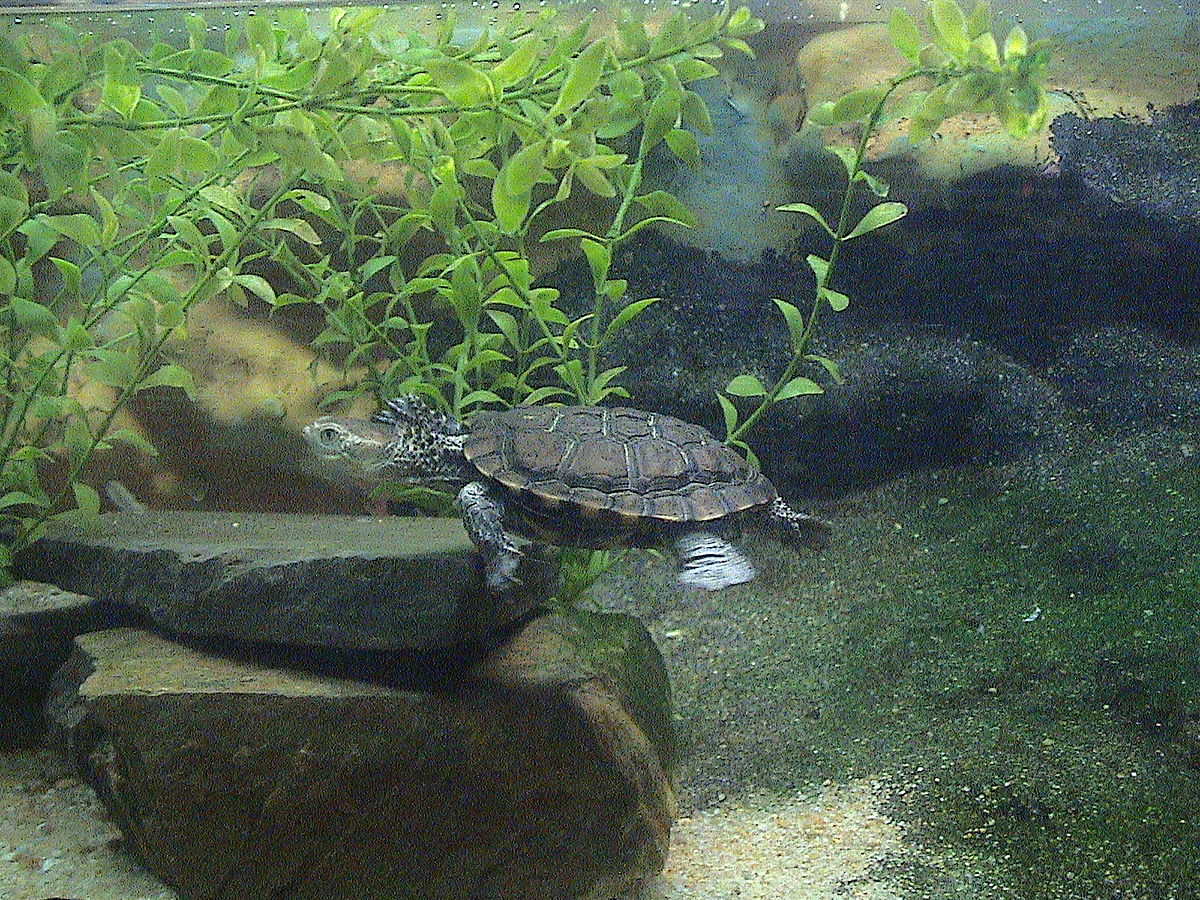Western swamp turtle
(Pseudemydura umbrina)

Description
Adult males do not exceed a length of 155 mm or a weight of 550 g.Females are smaller,not growing beyond 135 mm in carapace length or a weight of 410 g.Hatchlings have a carapace length of 24–29 mm and weigh between 3.2 and 6.6 g.The colour of the western swamp turtle varies dependent on age and the environment where it is found.Typical coloration for hatchlings is grey above with bright cream and black below.The colour of adults varies with differing swamp conditions,and varies from medium yellow-brown in clay swamps to almost black with a maroon tinge in the black coffee-coloured water of sandy swamps.Plastron colour is variable,from yellow to brown or occasionally black;often there are black spots on a yellow background with black edges to the scutes.The legs are short and covered in scale-like scutes and the feet have well-developed claws.The short neck is covered with horny tubercles and on the top of the head is a large single scute.It is the smallest chelid found in Australia.The only other species of freshwater tortoise occurring in the southwest of Western Australia is the narrow-breasted snake-necked turtle (Chelodina M.colliei).It has a neck equal to or longer than its shell,making the two species from south west Western Australia easily identifiable.The first specimen of the western swamp turtle was collected by Ludwig Preiss in 1839 and sent to Vienna Museum.There it was labelled "New Holland" and was named Pseudemydura umbrina 1901 by Seibenrock.No further collection of specimens was recorded until 1953.Glauert in 1954 named these specimens Emydura inspectata,but in 1958,Ernest Williams of Harvard University showed them to be synonyms of P.umbrina,collected by Preiss.
Taxonomic tree:







